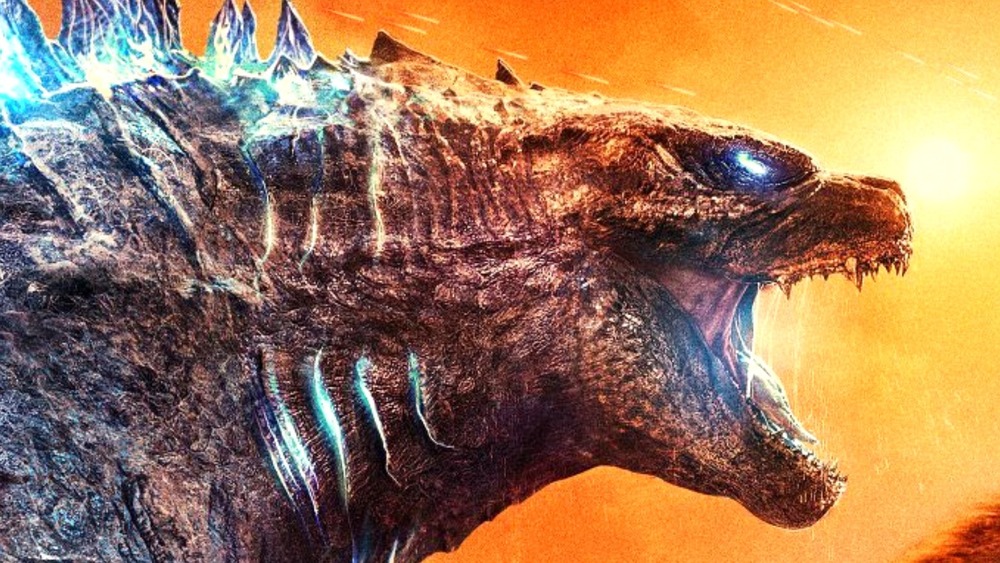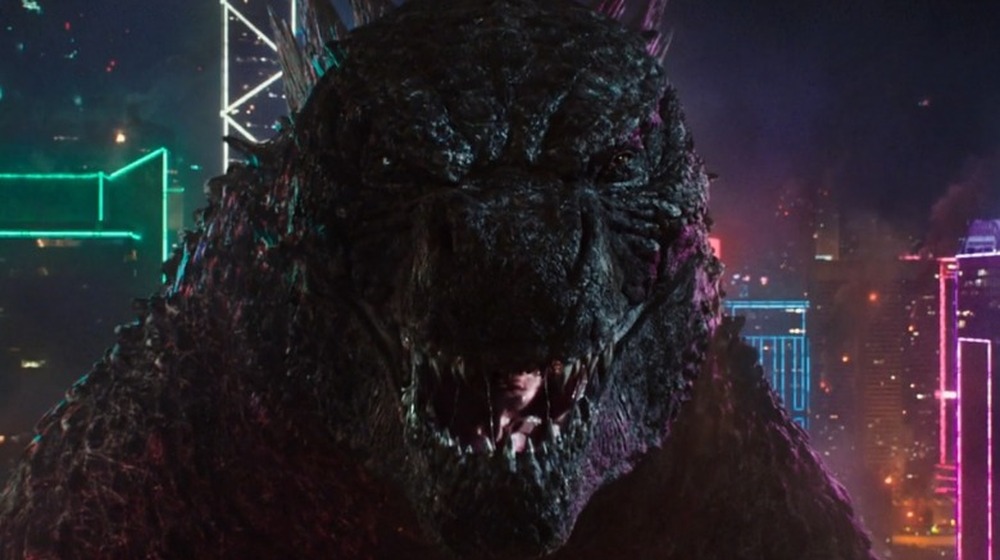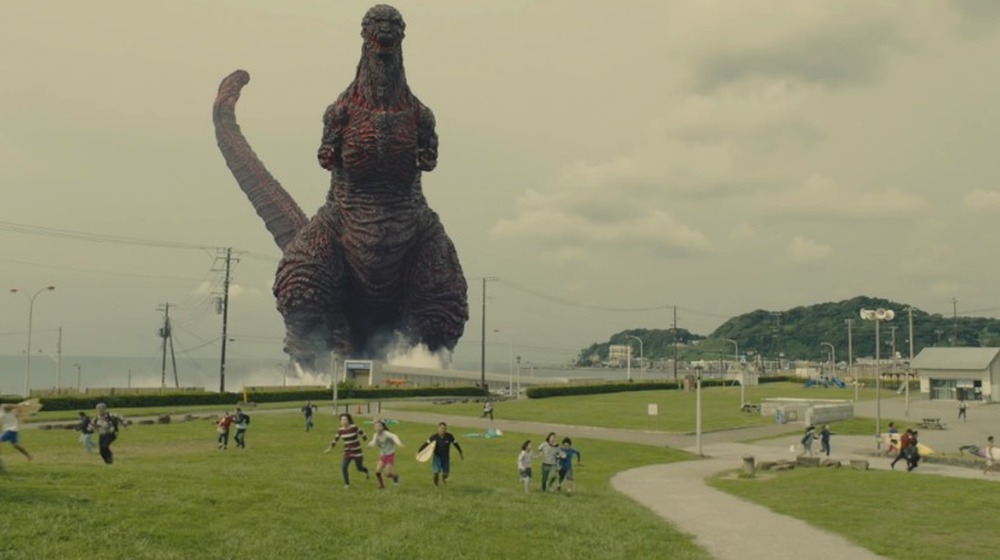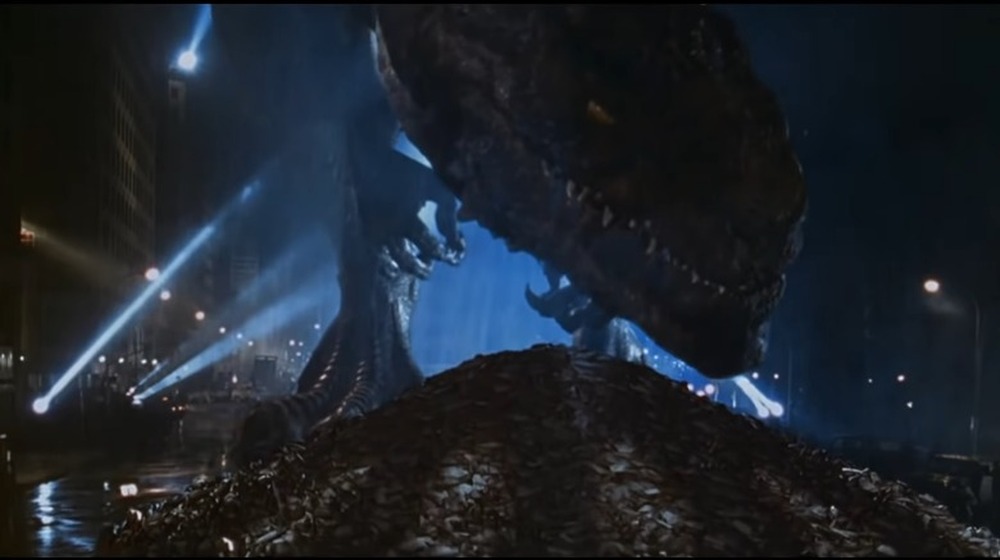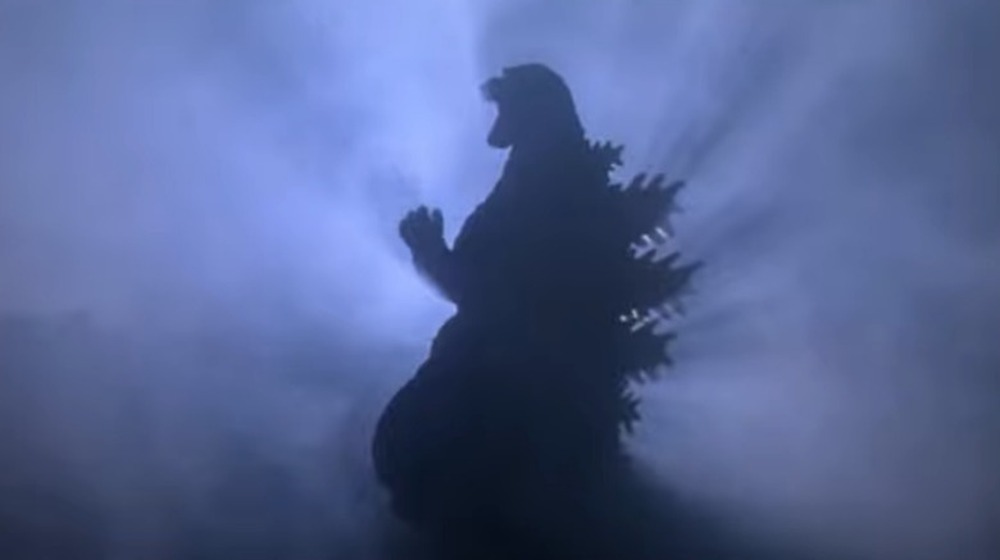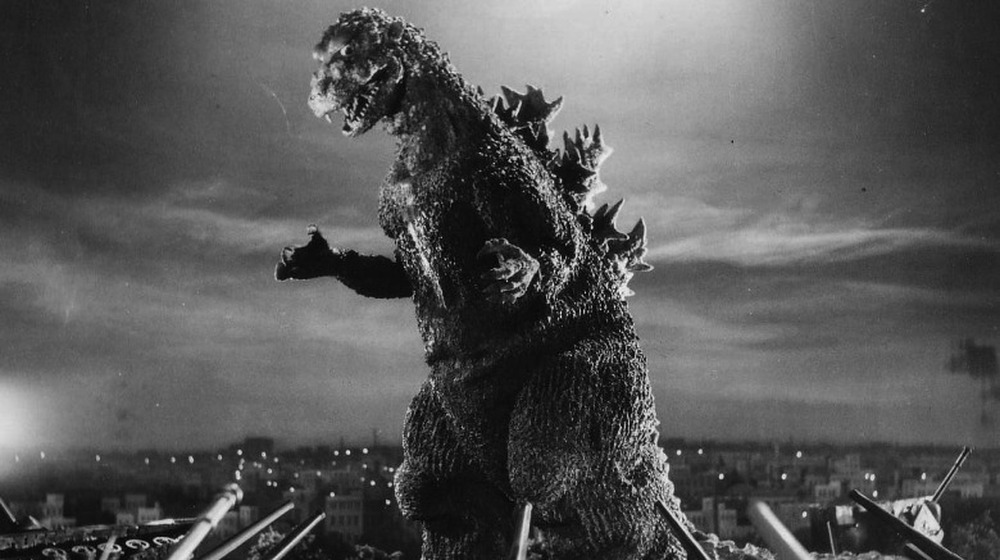Rules Godzilla Has To Follow In Every Movie
If you click a link and buy a product or service from a merchant, we may be paid an affiliate commission.
When it comes to movie monsters, you can't get more iconic than Godzilla. Virtually every movie that features the giant radioactive dinosaur, regardless of quality, sports a creature design and feel that rarely deviates from the original. But, not every incarnation of the King of Monsters is identical to previous and subsequent ones, as we can see now in Godzilla vs. Kong on HBO Max.
Since Godzilla first stomped into theaters in 1954, in order to stay relevant, it's had to evolve with the times. When audiences preferred movies about heroes, Godzilla became a benevolent defender of humanity, and then viewers wanted to see disaster films, so Godzilla transformed into a force of nature equivalent to a sentient nuke. And that doesn't even take into account Godzilla films that never got made (R.I.P. the original TriStar Godzilla film pitch). However, even though the creature's motivations vary more than its appearance, throughout the best and the worst Godzilla movies, the giant lizard is still contractually obligated to follow certain rules in virtually every outing.
No smiling, frowning, or emoting allowed
Throughout the franchise, Godzilla is generally depicted as an intelligent monster. In Godzilla vs. Kong, he is smart enough to realize that imbuing King Kong's axe with atomic breath transforms it into a makeshift lightsaber. But at the end of the day, Godzilla still has a lizard brain, so his visible emotions are limited to varying degrees of angry. This isn't inference though; it's a hard and fast rule.
According to Godzilla vs. Kong director Adam Wingard, Toho, the company that owns the rights to Godzilla, provided a series of notes to help him direct the movie. One of these notes included the rule that Godzilla doesn't emote. Wingard explained that the rule stipulated Godzilla is supposed to be a "god-like force of nature." Reacting the way any mammal would is "out of character" for Godzilla. That doesn't mean Godzilla lacks emotions in Godzilla vs. Kong, just that most of them are open to interpretation. For instance (minor spoilers), in one scene, Godzilla appears to be "smiling and laughing." But is he really, or is that just a non-diegetic trick of the camera? Wingard ain't talking.
Granted, Godzilla once jumped for joy, but that was a one-time thing when Toho was still experimenting with Godzilla's personality. He has yet to break character like that since.
What's in a look?
While Godzilla symbolizes the uncontrollable and unstoppable power of nuclear weapons, the Godzilla suit symbolizes efficient filmmaking. Instead of spending countless hours meticulously crafting a Ray Harryhausen-esque stop motion monster, the original Godzilla film's special effects director, Eiji Tsuburaya, opted for faster suitimation. As movie technology improved, filmmakers had to remake and at times reinvent the Godzilla suit to keep up with the evolving industry, as well as audience tastes. But, Toho penned a general blueprint to make any design, no matter how different, distinctly Godzilla.
When TriStar Pictures first started production on its Godzilla movie, Toho sent a handy dandy "Do's and Don'ts" list (via SciFi Japan) to help the studio nail the look and feel of the creature. These included:
-
A long tail
-
Four fingers and four toes on each of its respective two hands and two feet
-
Three rows of fins (yes, that's what Toho calls them) along the back
If you closely examine every suit design — a compilation of which is available on imgur — they all share these essential elements. For instance, while the exact shapes, sizes, and orientations of the fins differ from suit to suit (and the MonsterVerse CGI models), each incarnation always flaunts three rows of fins. And, even when the odd Godzilla design sports three toes, the hands are still tipped with four clawed fingers. The only Godzilla that ever deviated from these blueprints was, ironically, the final rendition of the TriStar Pictures Godzilla film. But, since that version has been renamed Zilla, Godzilla's appearance record has been retconned into spotless perfection.
Godzilla is a pescatarian
Godzilla's body is a biological, logistical nightmare that would make every evolutionary biologist simultaneously combust if he were real. Not only would Godzilla weigh far too much for his own body to support, but what would he eat? According to Toho, Godzilla's diet resembles that of a whale, which is fitting since he was purportedly designed as "a cross between a gorilla and a whale." Admittedly, you rarely if ever see Godzilla eat. Sure, he's bitten an evil kaiju or six, but he's never actually chewed or swallowed their rubber flesh. He hasn't even ever tried to consume people. Sure, Godzilla steps on them all the time, but he never devours them. That's because one of the stipulations Toho provided TriStar Pictures was "Godzilla does not eat people." However, the rule doesn't end there.
Apparently, Toho expanded on this essential piece of Godzilla behavior with an approved diet that consisted of fish. In what can only be described as a Godzilla-sized case of irony, while the TriStar Godzilla film broke almost every rule Toho wrote, it stuck to the requested piscivorous nature, which produced one of the most ridiculed scenes in Godzilla movie history.
All hail the immortal king
Godzilla has an interesting relationship with death. In the first Godzilla film, the giant monster is destroyed by a fictional piece of tech that weaponizes oxygen, and his remains are later dredged up to produce the skeleton of the franchise's third Mechagodzilla. And later, that same tech accidentally births Destoroyah, which serves as the fatal antagonist of Godzilla vs. Destoroyah. Yet despite all that, Toho wants to maintain the illusion that Godzilla is an invincible, unstoppable force of nature. Usually, whenever Godzilla is defeated, he only has the wind knocked out of him or is temporarily trapped. This mostly depends on Godzilla's role in the film, but nine times out of ten, Godzilla survives the events of one movie to raid again in the next one. Perhaps for this reason, Toho told TriStar Pictures that "Godzilla cannot die" in the American Godzilla film.
Although, to be fair, Toho sometimes stretches the definition of "cannot die." After the first Godzilla movie, Godzilla is replaced with another Godzilla, and in Godzilla vs. Destoroyah, Godzilla dies, yet his son, Godzilla Jr., absorbs his radiation and becomes the new de facto Godzilla. Perhaps when Toho said by "Godzilla cannot die," it wasn't talking about the monster but the title? Given the company's opinion of the first American Godzilla movie (via SciFi Japan), probably not.
Explosive nuclear origins
Everyone who has seen a Godzilla movie knows what Godzilla is, but what was he before he became a giant, rampaging movie star? The exact origins vary from film continuity to film continuity, but they all remain firmly tied to nuclear energy. When Toho handed TriStar Pictures a list of important Godzilla criteria, it stipulated that Godzilla had to be "created by a nuclear accident." And, while that movie's main monster began life as a humble marine iguana, it was transformed by radiation, so at least that important piece of backstory remained intact. However, the exact definition of the word "created" gets swapped as often as Godzilla's role in the films.
The first two Godzillas from the 1954 film and its sequel, Godzilla Raids Again, are considered two different members of the same species of aquatic reptile that were awakened and mutated by a bomb test. Starting with The Return of Godzilla, the creature was retconned into a dinosaur that was not asleep but was still mutated by bomb test radiation. And after Godzilla vs. Destoroyah, each new Godzilla film featured a Godzilla with a unique origin, ranging from a further-mutated Godzilla from Godzilla Raids Again to a ghost of the original Godzilla (yes, seriously). The current MonsterVerse Godzilla, meanwhile, mutated long before mankind evolved. Humans just woke him up.
No matter the movie, tone, or role, each Godzilla is inextricably linked to, is powered by, and represents nuclear energy.
